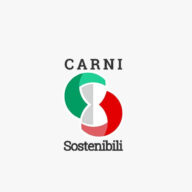
Rio 2016, the importance of meat for sportive people
The Olympic games of Rio 2016 are over but the importance of meat and of a balanced diet is still there. In fact, it is very important for those who practice physical activity to eat a healthy diet that provides sufficient calories and nutrients to meet the energy and nutritional needs and that can ensure optimal performance during exercise. Good nutrition helps the athlete to train hard, recover quickly and effectively adapt to environmental conditions, with less risk of illness and injury. It is no coincidence that physical activity creates a higher demand for energy, as well as macronutrients such as carbohydrates, fats and proteins.
Carbohydrates and fats are the primary fuel for exercise, while proteins are necessary for the growth and repair of body tissues: muscles contain about 40% of the total protein of the organism. When the amino acid requirement is not satisfied with the diet, muscle proteins supply the body with the necessary amino acids, but this also happens after exercise, that is, during the recovery phase, where it is crucial that there is an adequate supply of proteins.
Numerous studies have shown that consumption of protein, and in particular of the essential amino acids that constitute them, before, during, but especially immediately after training is capable of stimulating muscle protein synthesis. It is clear that the protein alone is not enough. But studies on the effects of proteins on muscle power have identified the forms that more than others are able to optimise muscle protein synthesis, inhibiting protein breakdown and thus stimulating muscle growth.
You must indeed favour the proteins rich in essential amino acids, such as those provided by milk and its by-products, eggs, fish and meat. Foods or snacks that contain high-quality protein, such as meat and cured meats, fish, legumes, eggs or milk should be consumed regularly throughout the day. In particular, immediately after exercise, to maximise protein synthesis and to assist muscle maintenance and contribute to repair damaged tissues.
Exercise increases the need for certain vitamins and minerals. A varied diet can balance energy expenditure and is able to meet the higher demand that the athletes have for some micronutrients, but there are some present in a highly absorbable form in animal products which are often deficient in diets of athletes, especially female athletes and vegetarians: calcium, iron, zinc and magnesium, and vitamin B12. Iron is a vital component of haemoglobin and myoglobin, proteins found in red blood cells and muscles, respectively.
Haemoglobin and myoglobin provide oxygen to the tissues during the activity and athletic performance of athletes, in particular of aerobic sports athletes; who strongly depend on oxygen intake to the muscles so that they can work efficiently. When the iron status is low, less oxygen is carried to the muscles and sports performance is reduced. Deficiencies of iron, often evident in athletes, can thus impair athletic performance and can be avoided by taking highly absorbable and usable iron, such as that contained in beef.
Zinc is involved in many important functions such as growth, the construction and repair of muscle tissue, and energy transformation. Athletes, particularly women, are at risk of deficiency of this mineral, whose best food source is from meat, but also eggs and fish products.
Some vitamins of the B group (thiamine, riboflavin, vitamin B6, niacin, pantothenic acid and biotin) are involved in the energy transformation process during exercise, while the foliate and vitamin B12 are necessary for the production of red blood cells, protein synthesis, repair and maintenance of tissues. Although the requirements of these vitamins is slightly higher in athletes, it is generally covered by the increased energy intake necessary for athletes to maintain body weight.
The Sustainable Meat Project




